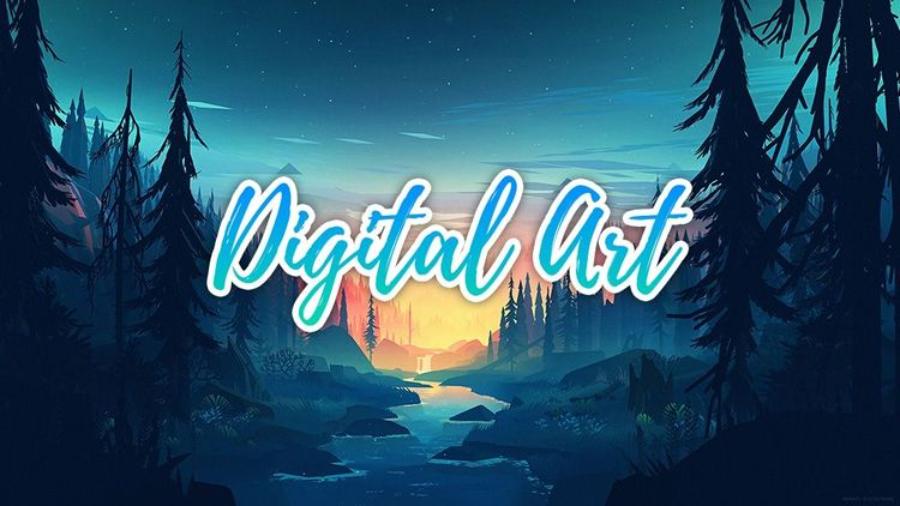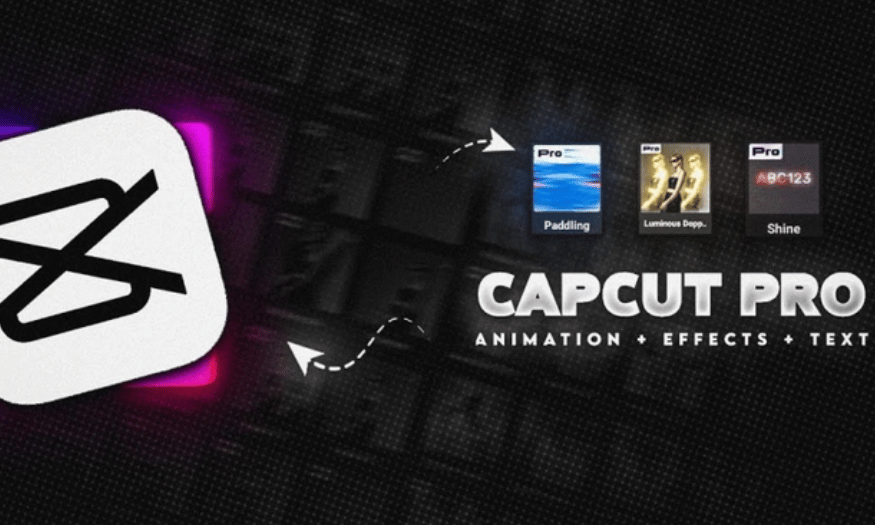Best Selling Products
Discover the Secret to Success in Digital Art
Nội dung
- 1. Solid Foundation: Develop Professional Skills and Shape Personal Style
- 1.1. Explore and Deepen Digital Art Fields
- 1.2. Mastering the Tools: Powerful Supporting Software and Devices
- 1.3. Continuous Improvement: Continuous Learning and Skill Development
- 2. Building a Professional Portfolio: The Impressive "Face" of a Digital Artist
- 2.1. Selecting High Quality and Suitable Works
- 2.2. Design an Attractive and Accessible Online Portfolio
- 2.3. Update Your Portfolio Regularly: Demonstrate Continuous Growth
- 3. Building a Strong Personal Brand: Creating a Distinctive Mark
- 3.1. Identify Core Values and Brand Message
- 3.2. Build a Consistent Online Presence
- 3.3. Create Quality and Consistent Content
- 4. Expand Your Network: Connect and Collaborate
- 4.1. Actively Participate in Events and the Community
- 4.2. Proactively Connect and Interact
- 4.3. Seeking Opportunities for Cooperation and Developing Joint Projects
- 5. Seize Job and Project Opportunities
- 5.1. Exploiting Job Search and Freelance Platforms
- 5.2. Direct Approach to Studios, Companies and Potential Clients
- 5.3. Building Relationships with Galleries and Collectors
- 6. Personal Financial Management and Business Development
- 6.1. Reasonable Pricing of Works and Services
- 6.2. Professional Contract and Payment Management
- 7. Conclusion
"Are you a passionate digital artist with a desire to shine? This article provides a detailed roadmap, from building skills, impressive portfolio to developing personal brand and finding opportunities, helping you build a prominent and sustainable Digital Art career.

In the digital age, the Digital Art industry has witnessed a strong rise, opening up countless opportunities for artistic souls passionate about technology. However, to truly stand out from the crowd and build a solid career in this competitive field, "digital artists" not only need to possess creative talent but also need to be equipped with proper knowledge and strategies. This article by sadesign will act as a comprehensive guide, providing practical and insightful advice, helping you step by step shape your career path, develop professional skills, build a strong personal brand and seize golden opportunities in the potential world of Digital Art.
1. Solid Foundation: Develop Professional Skills and Shape Personal Style
To lay the first solid bricks for a Digital Art career, focusing on developing professional skills and discovering unique artistic styles is extremely important.
.jpg)
1.1. Explore and Deepen Digital Art Fields
The world of Digital Art is extremely diverse, including many attractive fields such as:
Concept Art: Designing original ideas for characters, settings, props in games, movies and other creative projects.
Illustration: Create illustrations for books, comics, magazines, advertisements and many other media purposes.
3D Modeling: Build 3D models for games, animation, product design and architecture.
Animation: Create visual movements for cartoons, commercials, games and apps.
Motion Graphics: Design motion graphics and visual effects for video, television and online platforms.
Digital Painting: Use digital tools to create personal artwork.
Learning deeply about each field, identifying your strengths and personal interests will help you orient the most suitable development path. Don't hesitate to experiment with different genres to discover your true potential and passion.
1.2. Mastering the Tools: Powerful Supporting Software and Devices
Proficiency in using specialized software and equipment is key to bringing creative ideas to life. Some common tools used in the Digital Art industry include:
2D design software: Adobe Photoshop, Illustrator, Procreate, Corel Painter.
3D modeling and sculpting software: Blender, Autodesk Maya, ZBrush, Cinema 4D.
Animation and motion graphics software: Adobe After Effects, Toon Boom Harmony.
Supported devices: Electronic drawing board (Wacom, Huion), standard color screen, powerful computer.
Investing time and effort to learn, practice, and stay up to date on new features of these tools will help you improve your work efficiency and create high-quality work.
1.3. Continuous Improvement: Continuous Learning and Skill Development
The Digital Art industry is constantly moving and developing. Therefore, maintaining a spirit of learning and constantly improving skills is a vital factor to survive and develop in this field.
Take courses and workshops: Online and offline courses, specialized workshops are great opportunities to learn new knowledge, advanced techniques and interact with the community.
Follow top artists: Studying their workflow, artistic style, and how they built their careers can provide valuable inspiration and lessons.
Practice and challenge yourself: Spending time regularly practicing personal projects and taking on new challenges will help you hone your skills and stretch your creative limits.
Seek feedback and learn from the community: Sharing your work with online communities and peers, listening to honest comments and suggestions will help you identify areas for improvement and growth.
2. Building a Professional Portfolio: The Impressive "Face" of a Digital Artist
Portfolio is the "face" of a digital artist, the most important tool in terms of ability, style and attracting potential customers and employers.
.jpg)
2.1. Selecting High Quality and Suitable Works
An impressive portfolio is not about the quantity of work but about its quality and relevance to your career goals.
Prioritize your best work: Only include the work you're most proud of, that clearly demonstrates your outstanding style and skills.
Show diversity (if necessary): If you want to work in a variety of fields, choose work that represents each field. However, if you want to focus on a specific area of expertise, prioritize related work.
Focus on practicality: If you want to work on commercial projects, include work that has practical application or solves a specific design problem.
Ensure image quality: Use high resolution, well-lit, professionally presented images.
2.2. Design an Attractive and Accessible Online Portfolio
In the digital age, a professional online portfolio is a must.
Choosing the right platform: Platforms like ArtStation, Behance, Adobe Portfolio, or a personal website are all good options. Consider the pros and cons of each platform to make the right decision.
SEO Optimization: Use keywords related to your Digital Art, skills and style in your title, work description and tags to increase visibility on search engines.
User-friendly and easy to navigate: Design your portfolio so that viewers can easily search for information and view your work on any device (computer, phone, tablet).
Clear contact information: Make sure your contact information (email, phone number, social media) is prominently displayed so clients and employers can easily get in touch.
2.3. Update Your Portfolio Regularly: Demonstrate Continuous Growth
A portfolio is not a static document and needs to be updated regularly to reflect your career growth and progress.
Add new work: As you complete new and quality projects, add them to your portfolio.
Eliminate old or irrelevant work: Don't be afraid to eliminate work that no longer represents your current level of expertise or doesn't align with your career goals.
Show progress: Regularly updating your portfolio shows that you are an active artist, always learning and growing.
3. Building a Strong Personal Brand: Creating a Distinctive Mark
In a competitive market, building a strong personal brand helps you differentiate yourself, build credibility, and attract the right opportunities.
3.1. Identify Core Values and Brand Message
Your personal brand is built on your core values and the message you want to convey.
What kind of art do you want to be known for? Identify the defining characteristics of your creative style.
What unique value do you bring? It could be a special skill, a unique creative perspective, or expertise in a particular area.
What message do you want to convey through your work and personal images? Think about the meanings, emotions, or stories you want your audience to feel from your work.
3.2. Build a Consistent Online Presence
Online presence is an important part of personal branding.
Social Media: Choose platforms that resonate with your target audience (Instagram for visuals, Twitter for quick interactions, LinkedIn for professional connections, Facebook for community). Share your work, creative process, expertise, and interact with your followers.
Personal website: This is your online “home,” where you have complete control over how your portfolio is presented, your contact information, and where you can share your stories and thoughts via a blog (if you have one).
Join an online community: Digital Art Artist Forums, Facebook groups, Discord are great places to connect, learn, and share with like-minded people.
3.3. Create Quality and Consistent Content
The content you share online plays an important role in building your brand image.
High-Quality Images and Videos: Always make sure your work is presented professionally with high-resolution, well-lit images and videos.
Blog posts share knowledge and experience: Sharing your insights, techniques and experiences through blog posts can attract interested people and establish your expert status.
Livestream and Q&A: Interact directly with your audience through creative process livestreams or Q&A sessions to build rapport and increase engagement.
Maintain consistency: Use a consistent logo, colors, and fonts across all your online platforms. Your tone of voice should be professional, friendly, and consistent with the personal brand you want to build.
4. Expand Your Network: Connect and Collaborate
In the creative industry, networking plays a vital role in opening up new opportunities and accelerating career growth.
.jpg)
4.1. Actively Participate in Events and the Community
Attending Digital Art events, conferences and exhibitions is a great opportunity to meet people in the industry, learn from experience and expand your network.
Specialized events: Follow and participate in domestic and international seminars, workshops, and exhibitions on Digital Art.
Community meetups: Participate in offline meetups of digital artist communities to interact and share.
Competitions and Awards: Entering industry competitions and awards is not only a chance to challenge yourself but also helps you gain more exposure.
4.2. Proactively Connect and Interact
Don't be afraid to take the initiative to connect and engage with people you admire or who might offer collaboration opportunities.
Connect Online: Use social media platforms and LinkedIn to connect with artists, designers, art directors, and industry professionals.
Interact sincerely: Comment, share, and show genuine interest in other people's work.
Introduce yourself professionally: When given the opportunity, introduce yourself and your work in a concise, clear, and professional manner.
4.3. Seeking Opportunities for Cooperation and Developing Joint Projects
Collaborating with others can lead to new experiences, expand skills, and create more impressive projects.
Participate in group projects: Look for opportunities to participate in group projects, try different roles to learn and expand your experience.
Collaborate with relevant experts: Connect and collaborate with experts in relevant fields such as music, programming, marketing to create more diverse and attractive products.
5. Seize Job and Project Opportunities
Once you have built a solid foundation and network, proactively seeking out job opportunities and projects is an important next step.
5.1. Exploiting Job Search and Freelance Platforms
There are many online platforms that help connect digital artists with employers and clients.
Specialized recruitment websites: ArtStation Jobs, Behance Jobs, LinkedIn Jobs regularly post recruitment positions in the field of Digital Art.
Freelance platforms: Upwork, Fiverr are where you can search for freelance projects that match your skills and experience.
Optimize your profile: Make sure your profile and portfolio on these platforms are fully updated, professional, and optimized with relevant keywords.
5.2. Direct Approach to Studios, Companies and Potential Clients
In addition to waiting for opportunities, proactively reaching out to potential studios, companies, and clients can yield surprising results.
Research and target: Identify studios, companies or clients you want to partner with or work with.
Send a professional introduction email: Compose a brief introduction email that highlights your skills, experience, and portfolio, while demonstrating an understanding of their work.
Enter competitions and awards: Winning awards in prestigious competitions can help you attract the attention of potential employers and clients.
5.3. Building Relationships with Galleries and Collectors
If you are interested in developing a career in digital art, building relationships with galleries and collectors is important.
Participate in digital art exhibitions: This is an opportunity to showcase your work and connect with industry professionals.
Contact galleries that specialize in Digital Art: Research galleries that fit your style and proactively reach out to showcase your work.
Build relationships with collectors: Attend art events and look for opportunities to connect with potential collectors.
6. Personal Financial Management and Business Development
To build a sustainable career, financial management and personal business development are extremely important.
.jpg)
6.1. Reasonable Pricing of Works and Services
Pricing your products and services appropriately is key to ensuring revenue and sustainable growth.
Market Price Research: Find out the general price range for similar types of Digital Art in the market.
Consider the factors: Calculate the time it takes to complete the project, the complexity of the project, your experience and personal reputation.
Create a clear price list: Create a detailed and flexible service price list for customers to easily refer to.
6.2. Professional Contract and Payment Management
Professional contract and payment management protects your interests and builds credibility with customers.
Use clear contracts: Always use detailed contracts for every project, clearly stating the scope of work, time of completion, costs, payment methods and related terms.
Set up payment process: Offer convenient payment methods to customers and ensure payments are made on time.
Track Income and Expenses: Record and track income and expenses to manage finances effectively and make informed business decisions.
7. Conclusion
Building a successful career in Digital Art is a journey that requires a combination of artistic talent, technical skills, smart branding strategies, networking abilities, and effective financial management. There are no shortcuts to success, but with passion, constant effort to learn, and applying the advice shared in this article, "digital artists" can absolutely break through, affirm their position, and build a brilliant career in the potential world of Digital Art. Remember, perseverance and adaptability are the keys to shine and reap well-deserved success on this exciting digital art path.












































